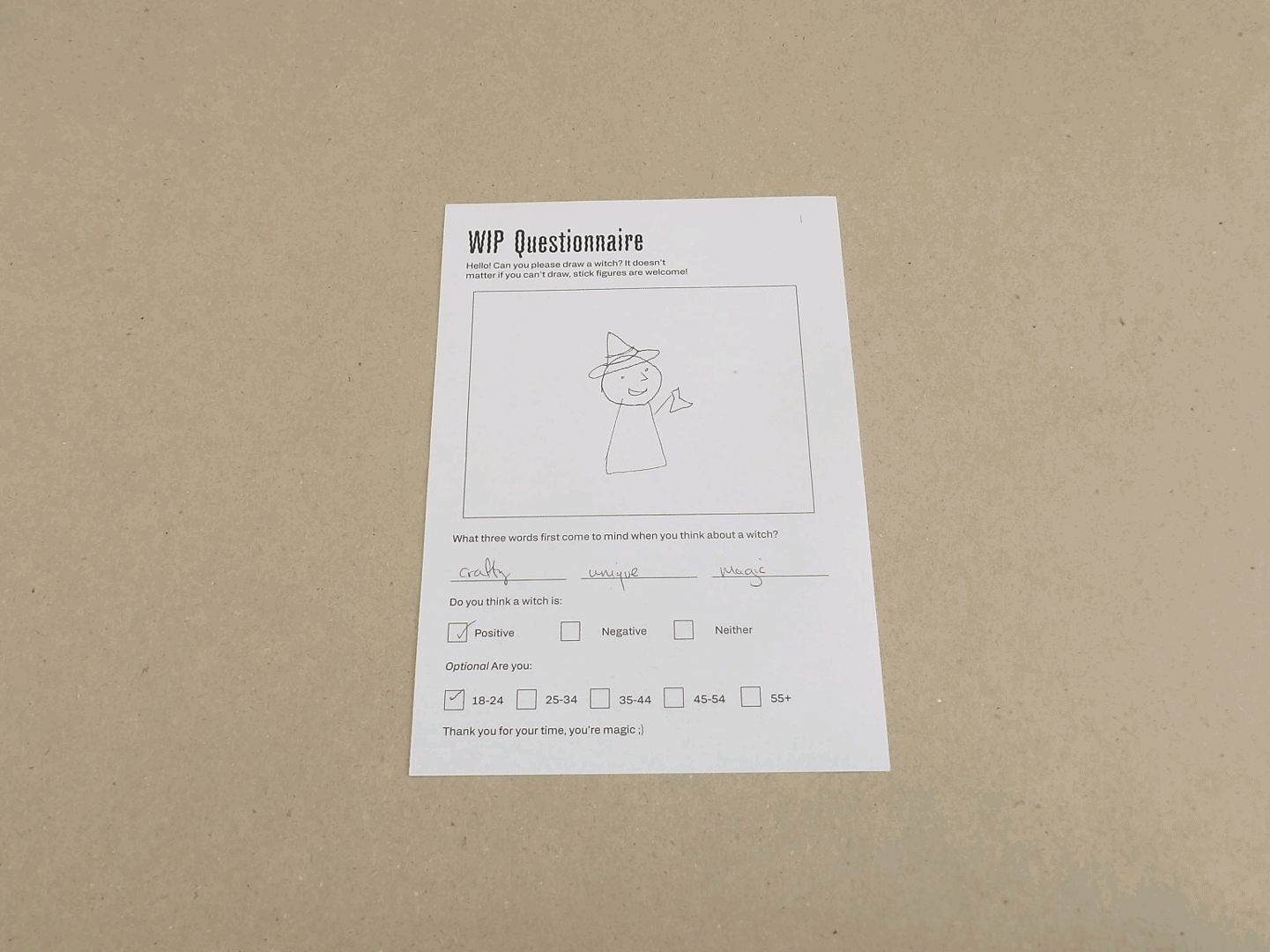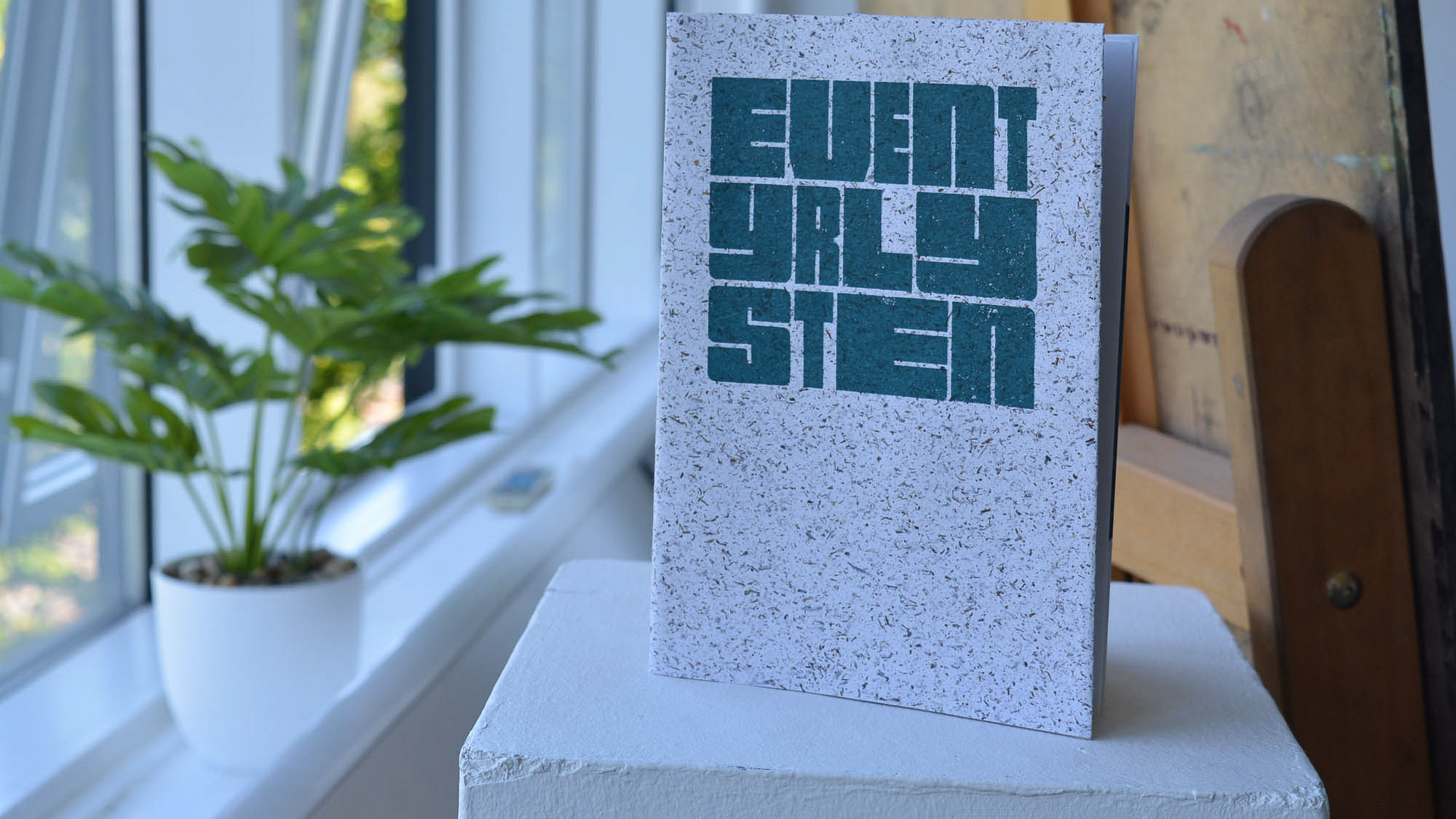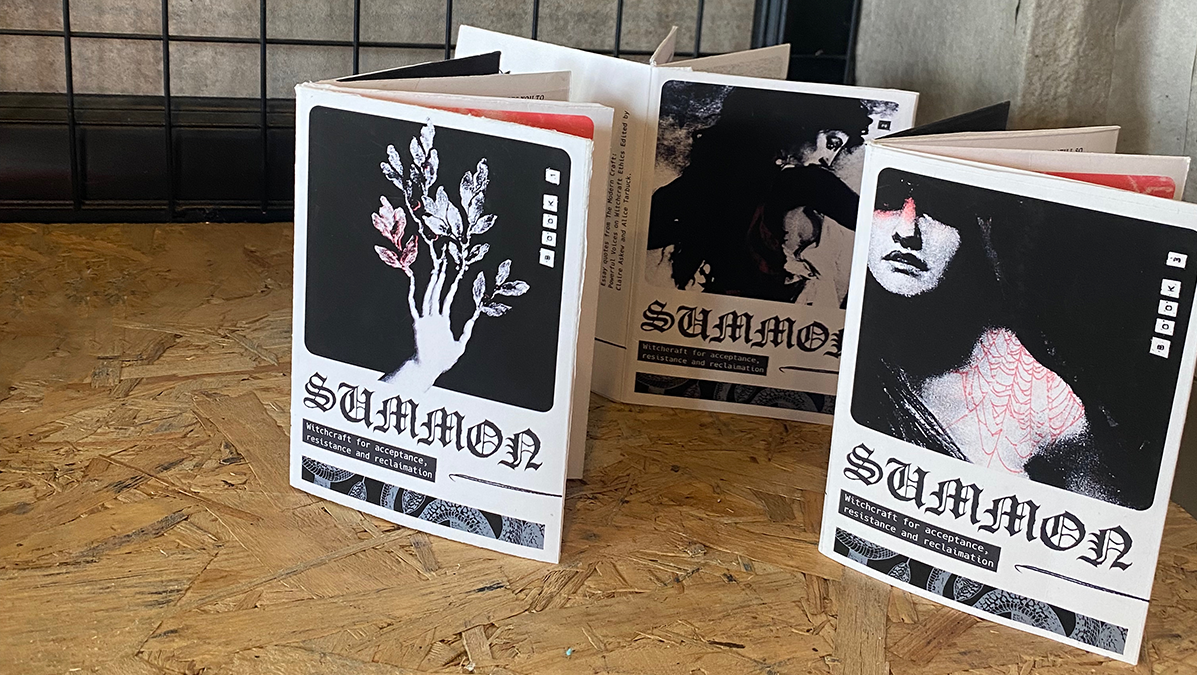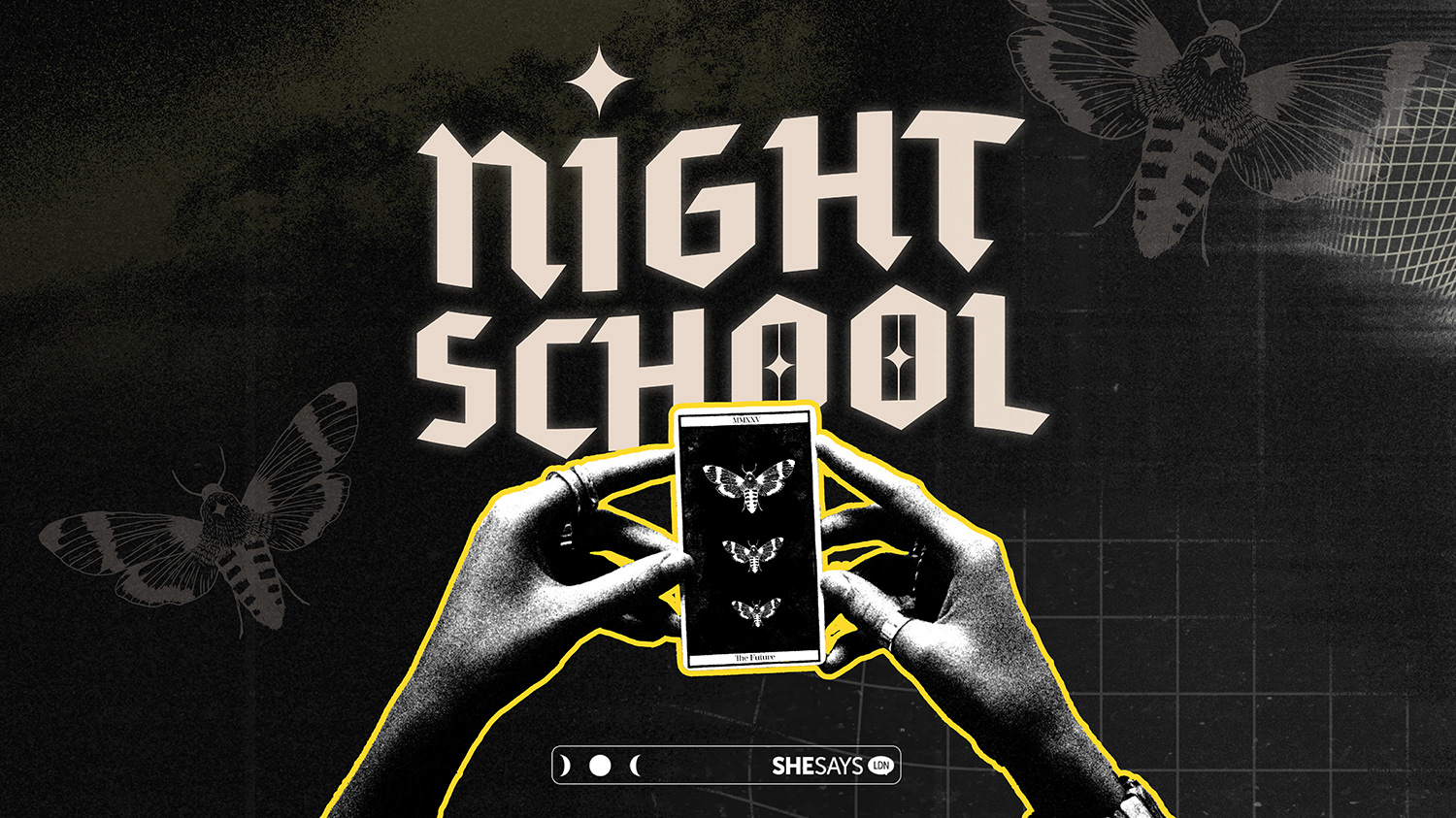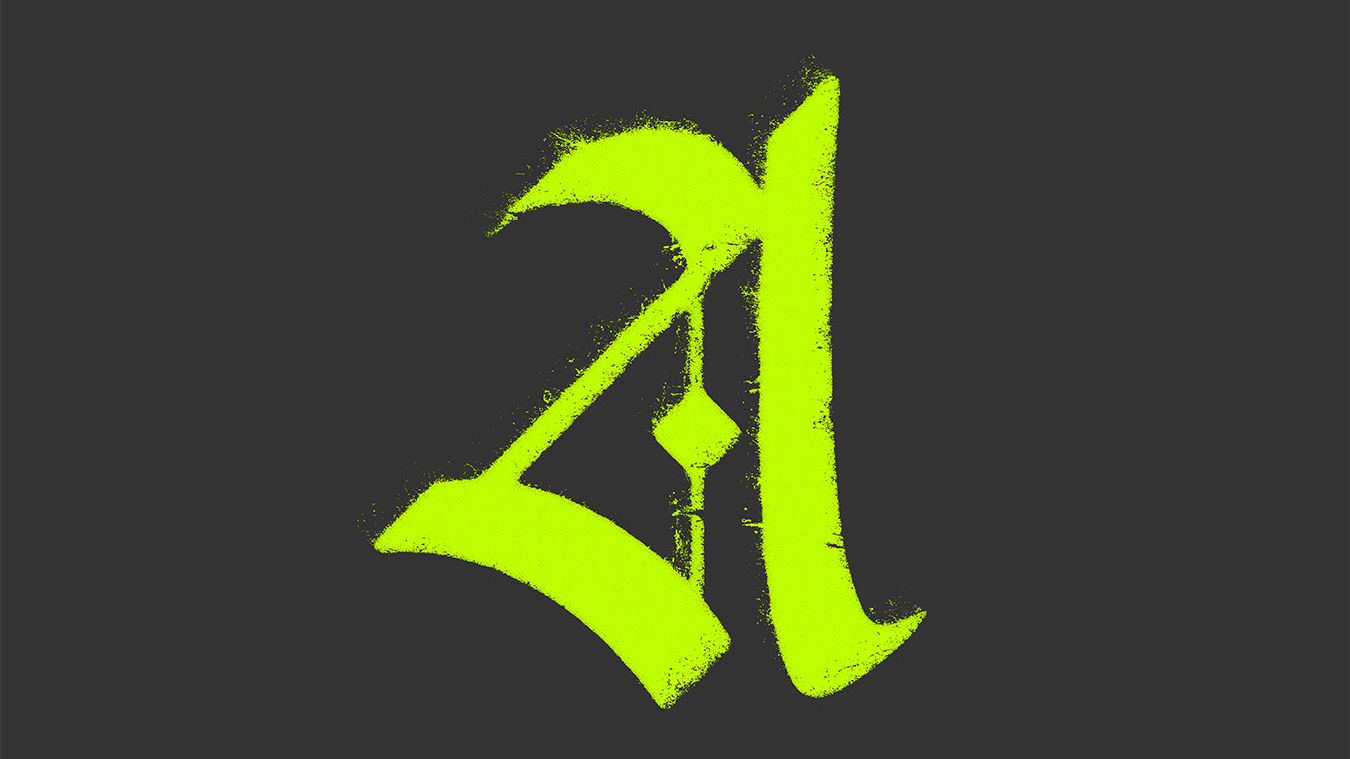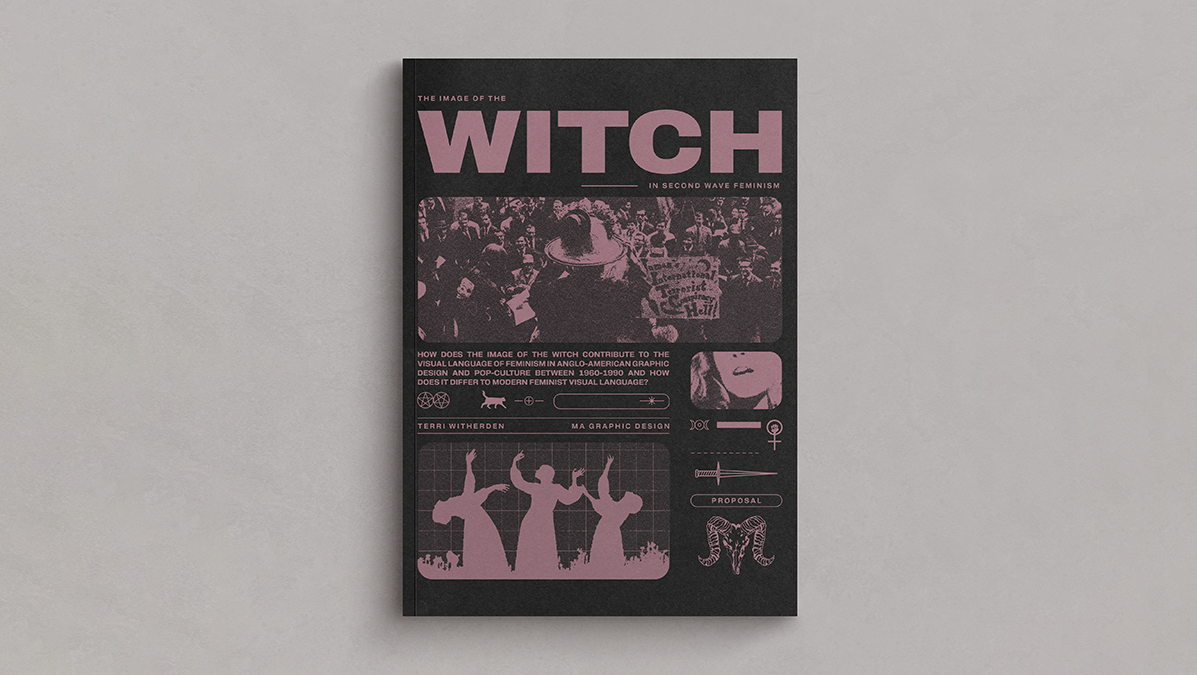Work In Progress Graduate Show
MA Graphic Design
Editorial, Print, Creative Research, Data Visualisation
Overview
As part of the Graphic Design MA, students were invited to contribute their research in the form of a stall at a Work in Progress (WIP) show that ran alongside The University of Portsmouth’s Graduate Showcase event for the faculty of Creative and Cultural Industries.
Whilst BA graduate work displayed was the final outcome, the MA was only part way through. Therefore the work displayed was work in progress. This was a chance to introduce my chosen research topic to a wider audience, test prototypes and conduct primary research.
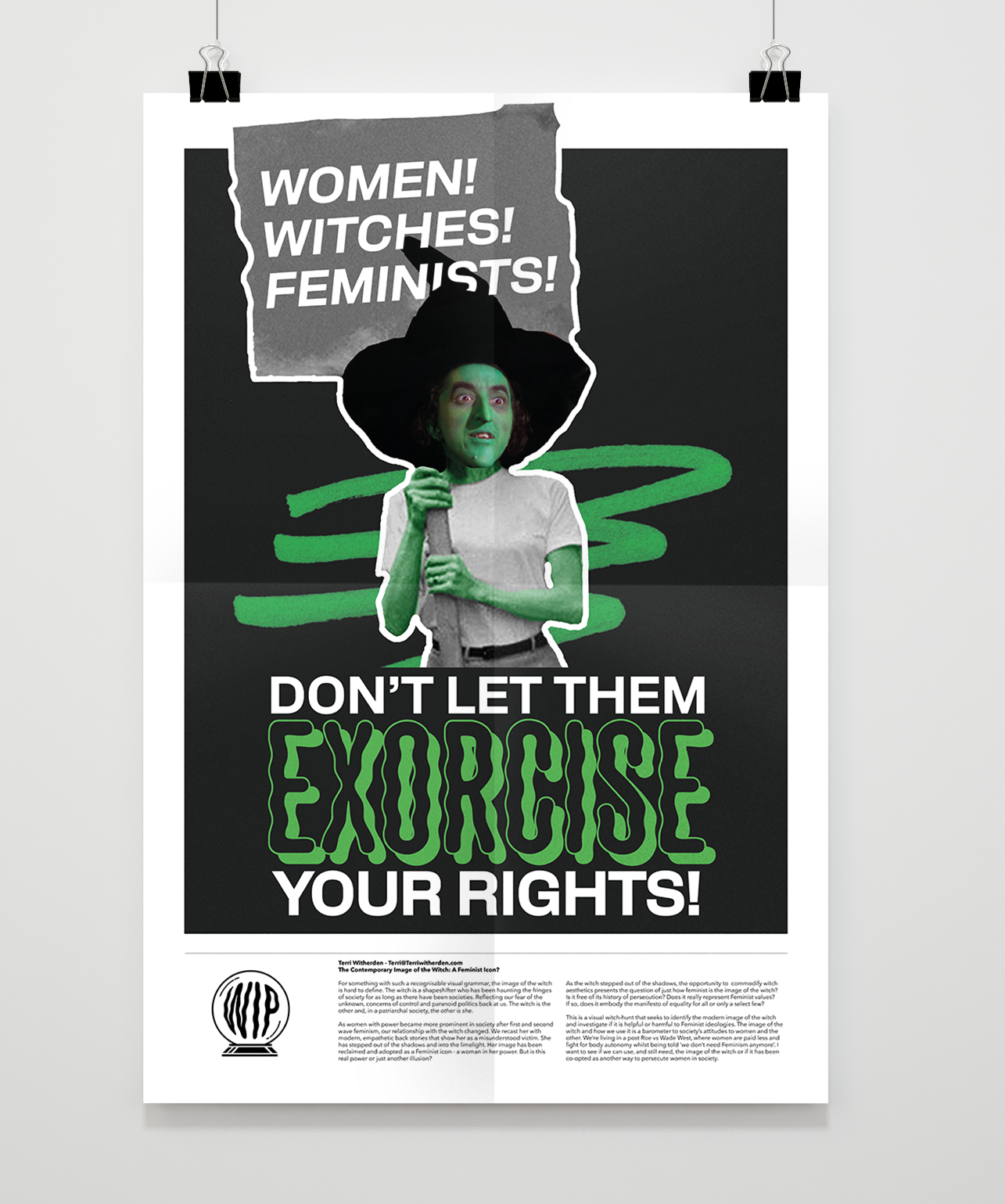
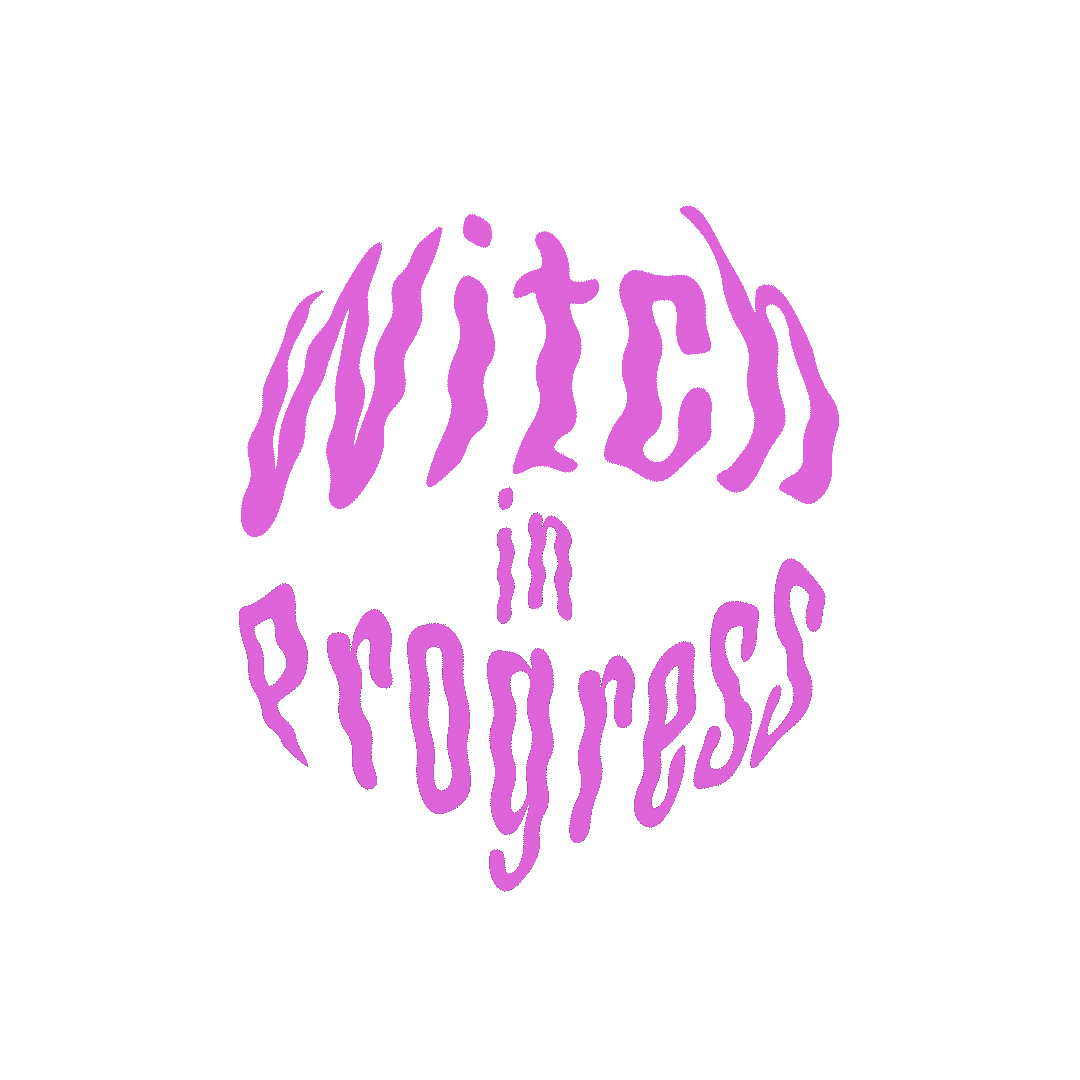
Strategy and Development
Students were issued with a stall and space for a A1 research posters. For my project I chose to create an ‘Altar’ for the witch based research and combine it with feminist propaganda inspired by second wave feminism print culture. Sandwiched in between stalls displaying predominantly digital work on screen, I felt extra pressure to make sure my print based offerings still drew attention. I did this by adding an element of play to my stall, dressing it as an altar space with a singular ‘spell book’, prototype feminist-witch inspired tarot cards, crystals and altar cloth. I also invited visitors to participate in secondary research in the form of a questionnaire.
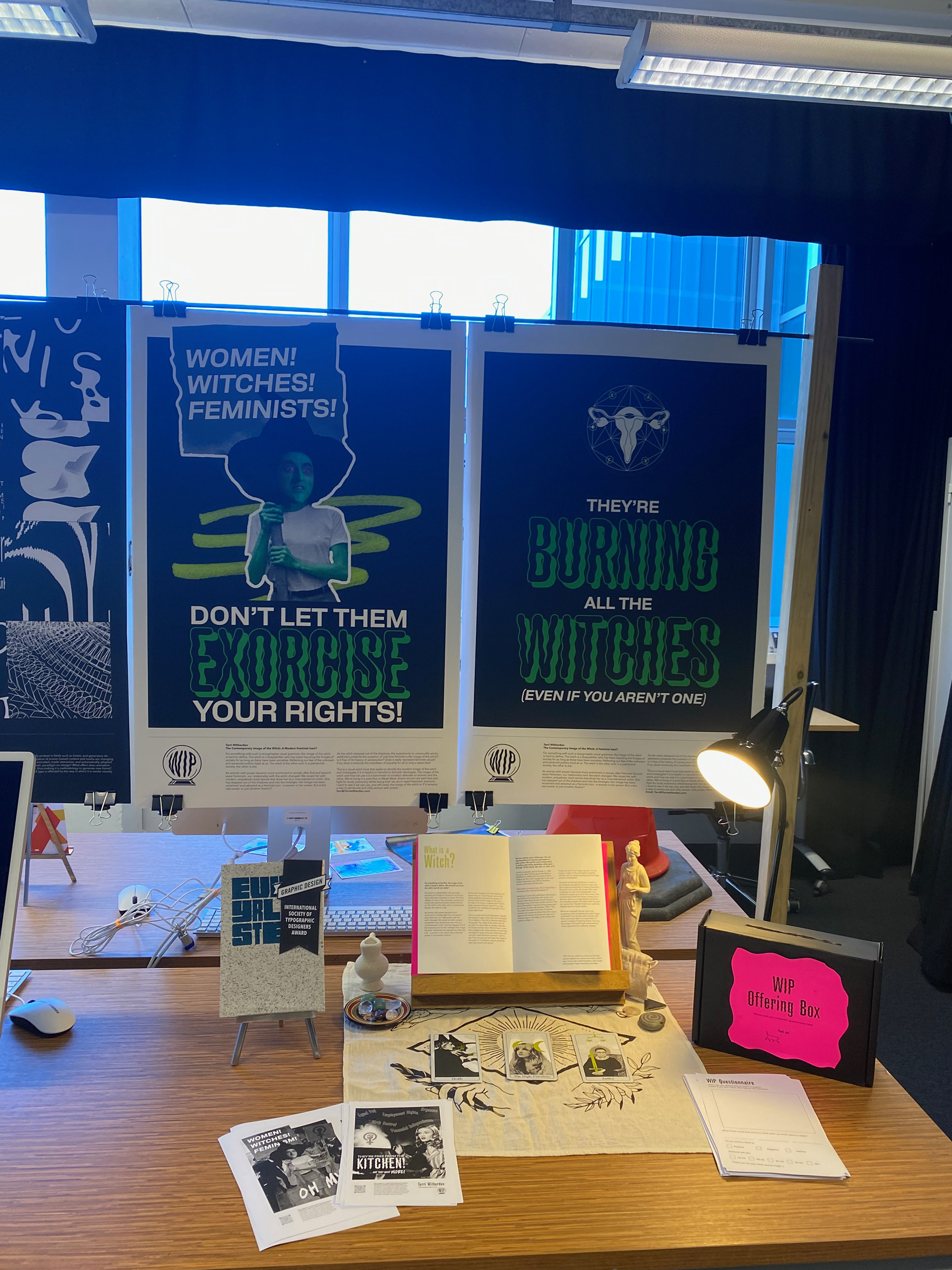

Prototypes and Solutions
The main prototype tested at the show was a ‘spell book’ inspired concertina book that introduced visitors to the project. This book had a reversible cover playing with the homophones witch and which and included a visual timeline that showed how the image of the witch changed and diversified alongside the roles and increased rights of women over the 20th century.The book introduced readers to the concept that the image of the witch represents social attitudes to women and included images of my research so far. Whilst it was written to be a quickfire guide, it became clear that my written style and ‘voice’ translated well through the editorial medium, giving me inspiration to develop this further into my final resolution: Amicus Maleficarum.
Testing and Solution
Another concept I was testing for further development was a deck of Tarot inspired witch-feminist card deck. The idea behind this output was the current popularity of Tarot and Oracle cards with young people and modern witches. I wanted to combine Tarot imagery and card meanings with witch and feminist icons so that users of the cards learned more about feminism and how the witch is linked to the representation of women in our society.
I created three cards based on the imagery of the Rider Waite Tarot card deck and three witch- feminists: Stevie Nicks (The High Priestess), Ruth Bader Gainsberg (Justice) and the Wicked Witch of the West (Death). The cards themselves were very popular and led to discussions on materiality and a possible Kickstarter. They also drew visitors to engage with the stall more than the initial centre book, although the cards led to more engagement with the book overall.
However, returning to my initial desire to create a Resolution that introduced people to and educated against the harmful stereotypes of the witch and the feminist, it became clear the Tarot inspired cards were not the right vehicle. Tarot is already loaded with meaning and adding my own layer of witch-feminist narratives would risk diluting the message. Also, asking users of the final resolution to learn Tarot to engage with the project felt like an added barrier to entry that would deter people from learning about feminism unless they already had an interest in the witch. The brief was to create an accessible introduction to feminism using the image of the witch, which the card solution did not provide.
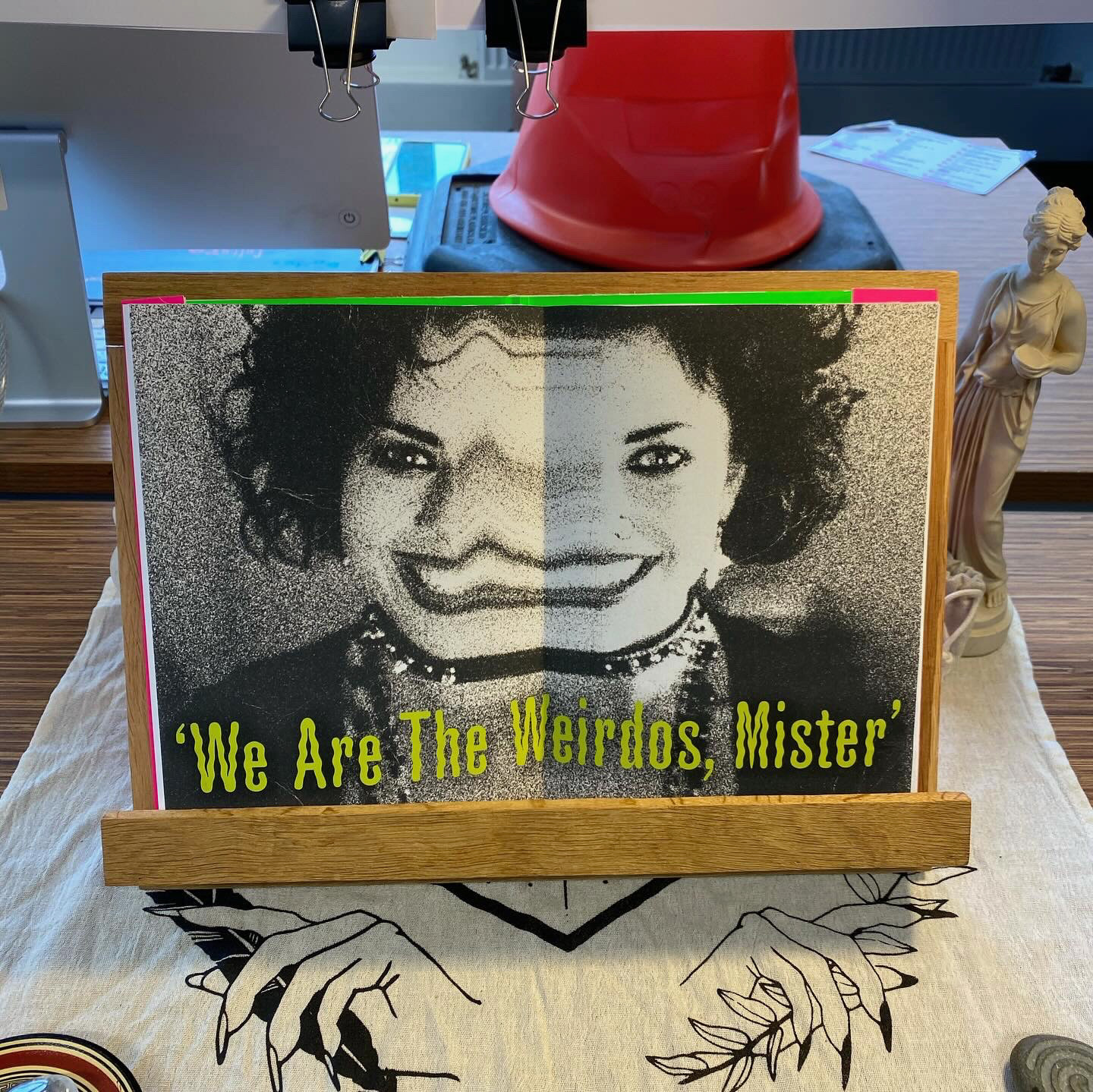
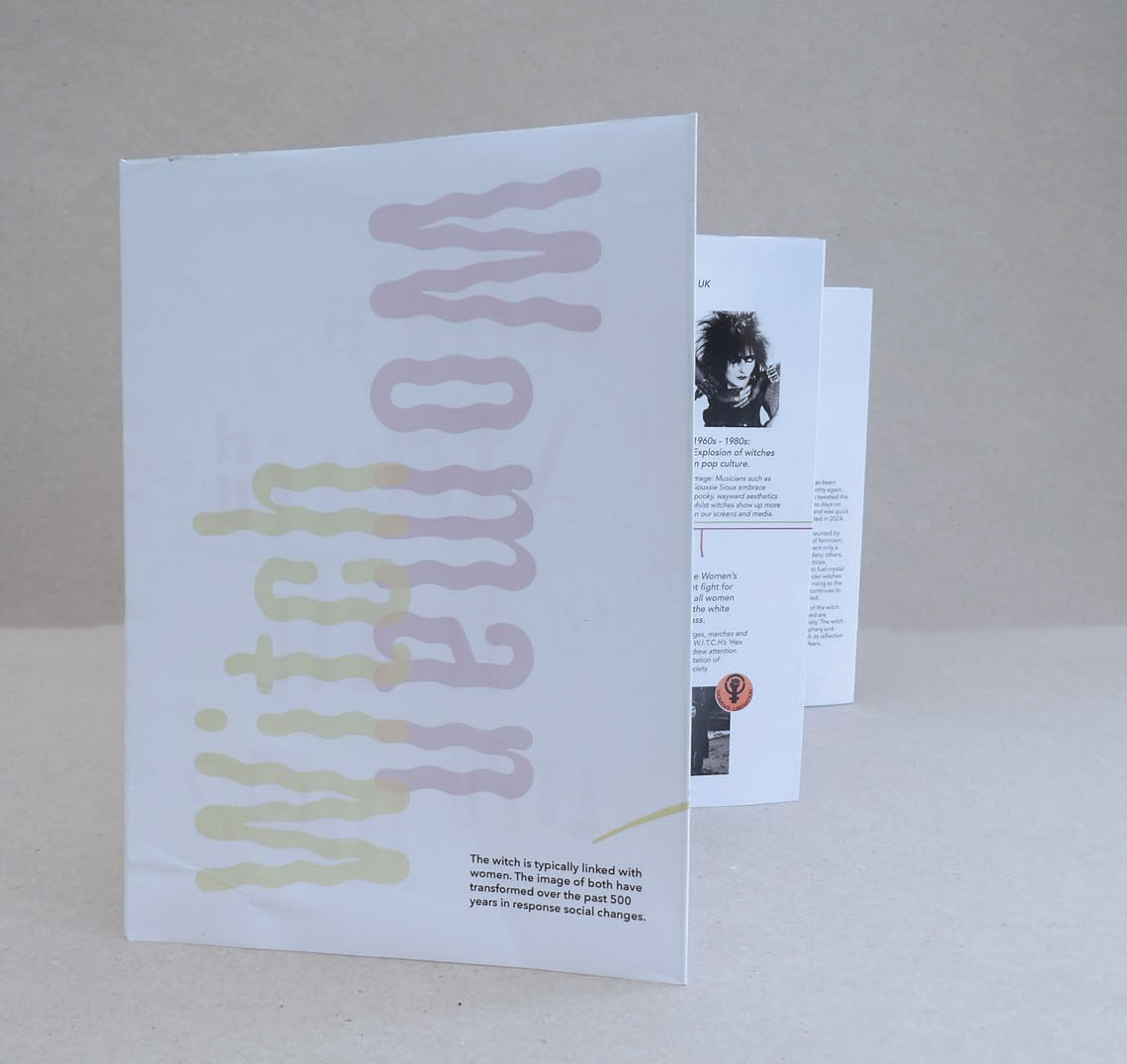
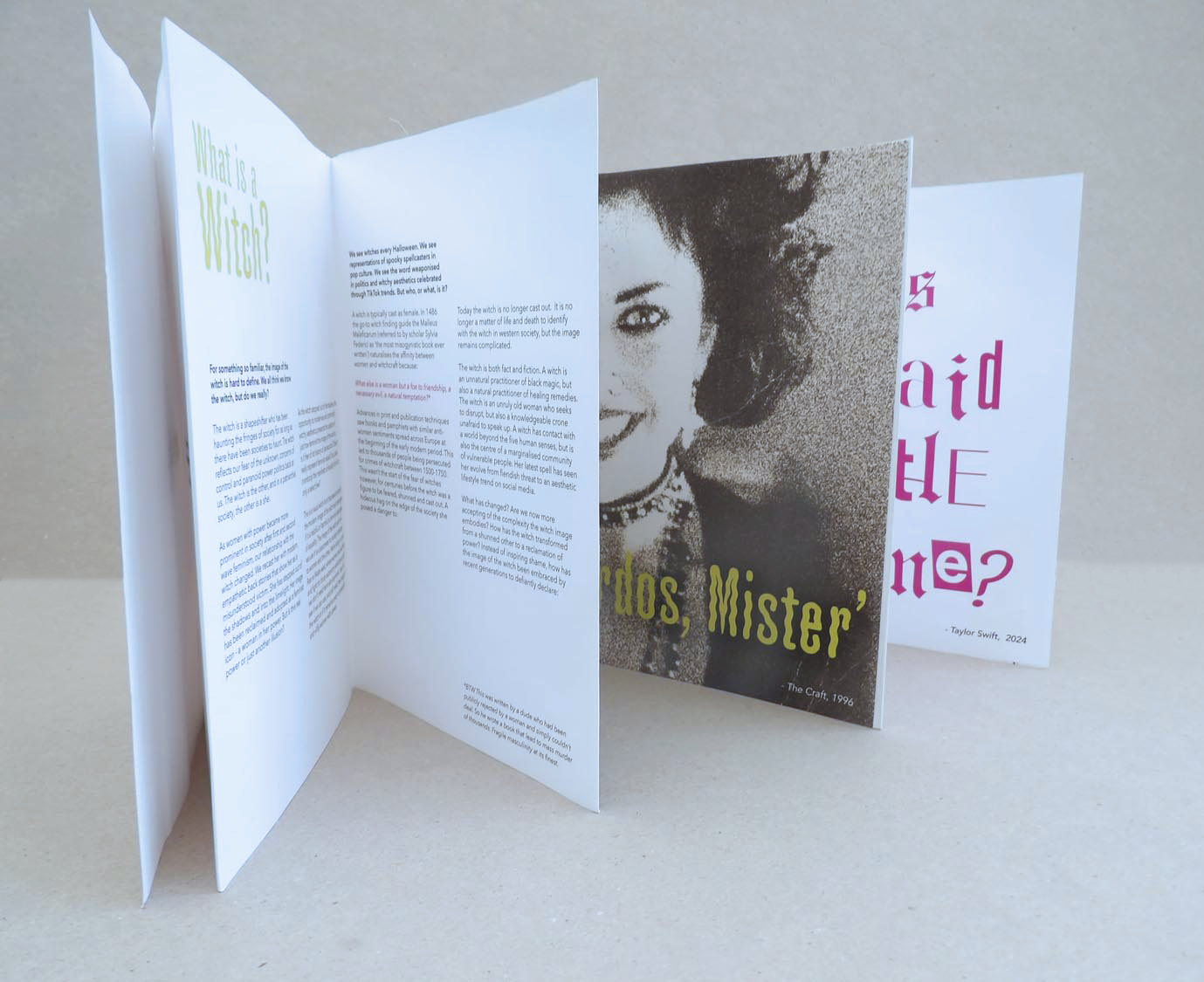
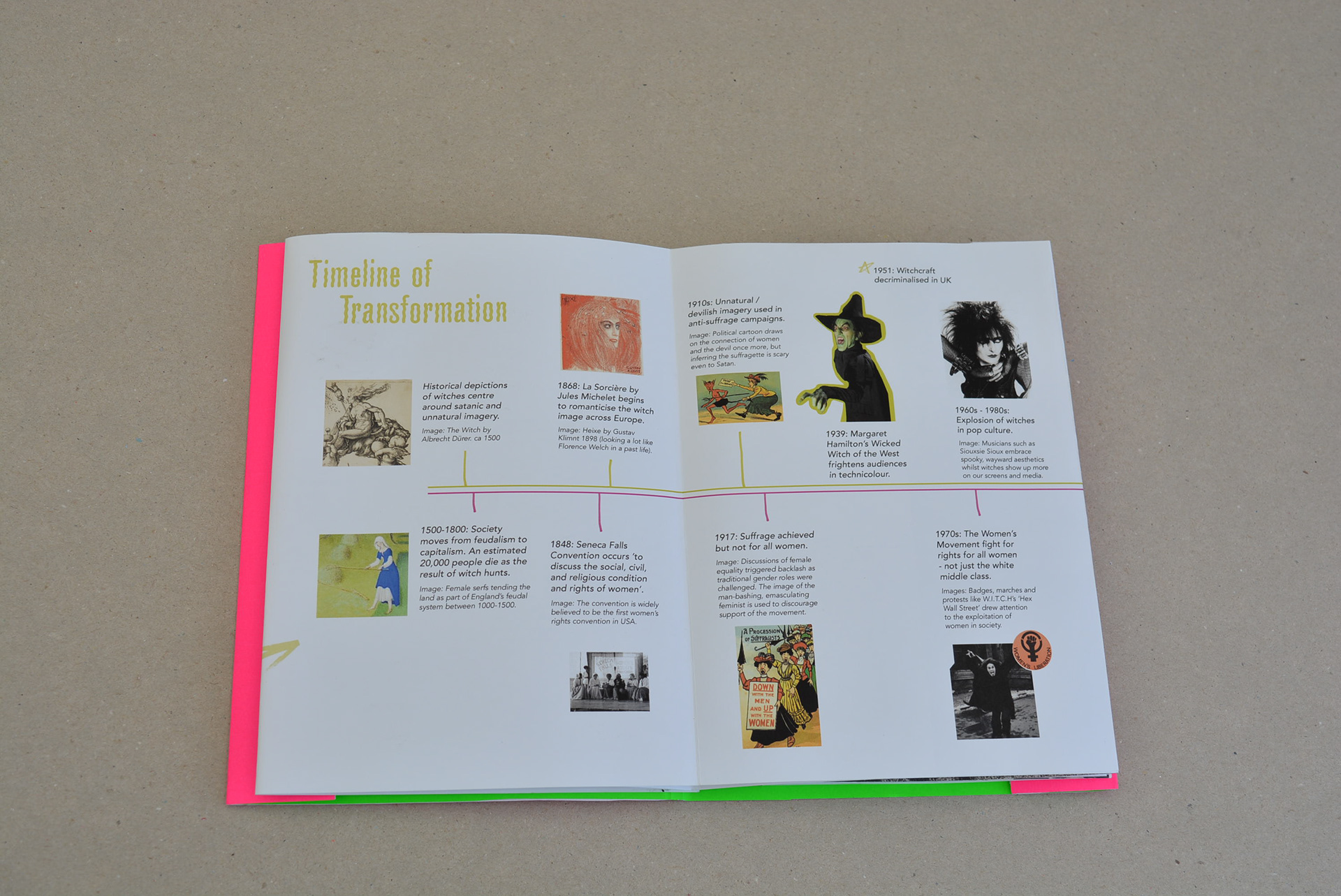

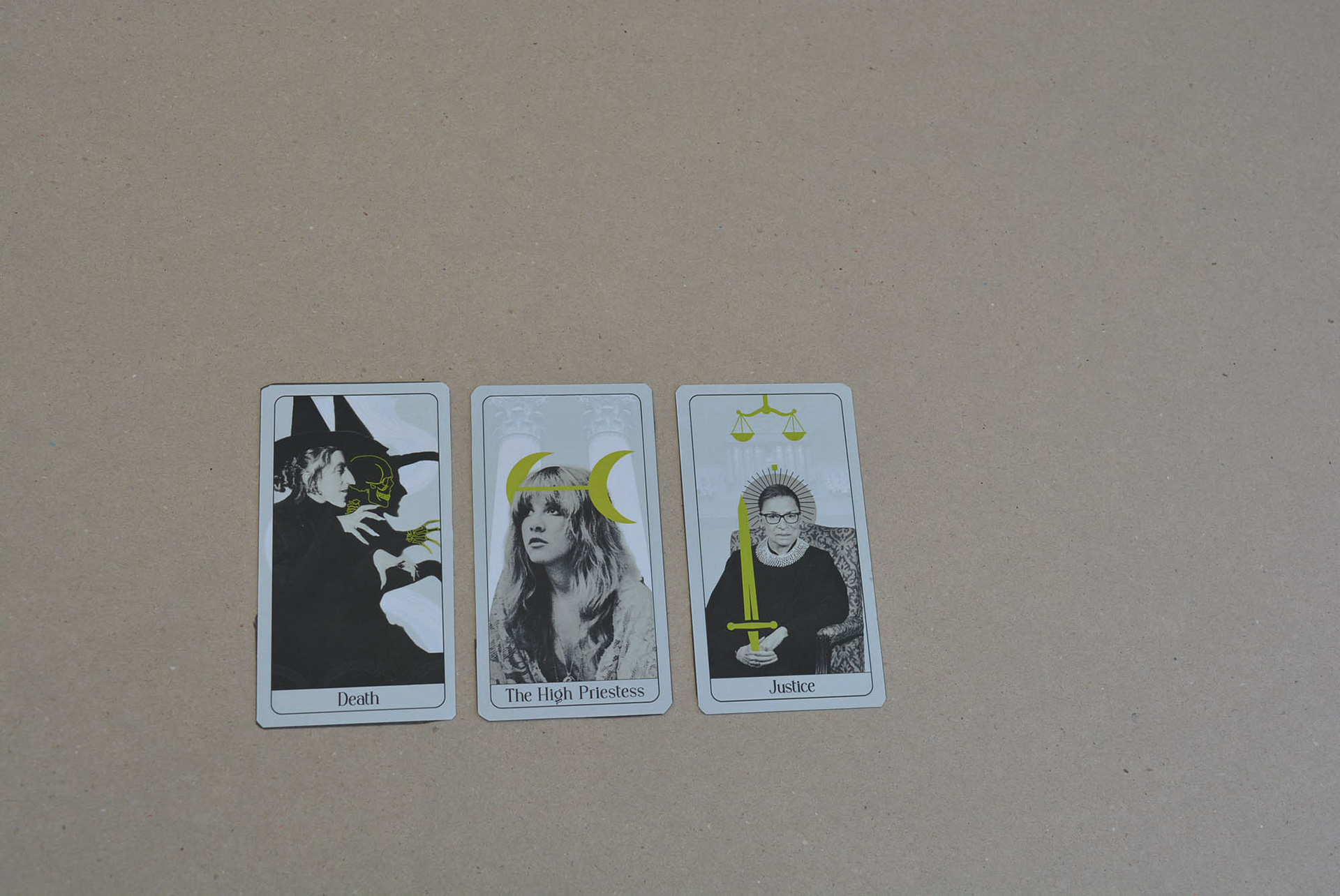


Results
The final part of this project was a form of user research with the opportunity for the public to engage in a ‘which witch’ questionnaire. This not only engaged visitors but helped me identify the modern image of the witch in the public’s mind through asking participants to ‘draw a witch’. I also asked for three words that participants associated with the witch and whether or not they had a positive, negative or neutral perception of a witch. When combined with users age groups, this gave me an opportunity to see any shifts in public perception of the witch (which generation, if any, found the with more positive or negative for example) and to see which witch icons (broomsticks, cats, wands) came up most frequently.
I collected 32 results which inspired my research. The show also helped me refine my research topic by outlining which witch I was looking at, was it practicing witches today? Was it fictional witches turning people into toads or was it the image of the witch in popular culture. By refining my research based on the publics feedback I was able to progress my MA in ways I wouldn’t have considered if I had not taken part in the WIP show.
